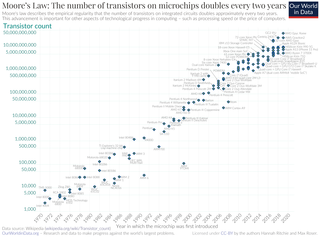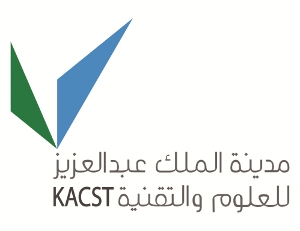
Intel Corporation is an American multinational corporation and technology company headquartered in Santa Clara, California. It is the world's largest semiconductor chip manufacturer by revenue, and is one of the developers of the x86 series of instruction sets, the instruction sets found in most personal computers (PCs). Incorporated in Delaware, Intel ranked No. 45 in the 2020 Fortune 500 list of the largest United States corporations by total revenue for nearly a decade, from 2007 to 2016 fiscal years.

A non-disclosure agreement (NDA) is a legal contract or part of a contract between at least two parties that outlines confidential material, knowledge, or information that the parties wish to share with one another for certain purposes, but wish to restrict access to. Doctor–patient confidentiality, attorney–client privilege, priest–penitent privilege and bank–client confidentiality agreements are examples of NDAs, which are often not enshrined in a written contract between the parties.

Moore's law is the observation that the number of transistors in a dense integrated circuit (IC) doubles about every two years. Moore's law is an observation and projection of a historical trend. Rather than a law of physics, it is an empirical relationship linked to gains from experience in production.

The Register is a British technology news website co-founded in 1994 by Mike Magee, John Lettice and Ross Alderson. The online newspaper's masthead sublogo is "Biting the hand that feeds IT." Their primary focus is information technology news and opinions.
Trusted Computing (TC) is a technology developed and promoted by the Trusted Computing Group. The term is taken from the field of trusted systems and has a specialized meaning that is distinct from the field of Confidential Computing. The core idea of trusted computing is to give hardware manufacturers control over what software does and does not run on a system by refusing to run unsigned software. With Trusted Computing, the computer will consistently behave in expected ways, and those behaviors will be enforced by computer hardware and software. Enforcing this behavior is achieved by loading the hardware with a unique encryption key that is inaccessible to the rest of the system and the owner.

Hyper-threading is Intel's proprietary simultaneous multithreading (SMT) implementation used to improve parallelization of computations performed on x86 microprocessors. It was introduced on Xeon server processors in February 2002 and on Pentium 4 desktop processors in November 2002. Since then, Intel has included this technology in Itanium, Atom, and Core 'i' Series CPUs, among others.
Simultaneous multithreading (SMT) is a technique for improving the overall efficiency of superscalar CPUs with hardware multithreading. SMT permits multiple independent threads of execution to better use the resources provided by modern processor architectures.
x86 virtualization is the use of hardware-assisted virtualization capabilities on an x86/x86-64 CPU.
The Intelligent Platform Management Interface (IPMI) is a set of computer interface specifications for an autonomous computer subsystem that provides management and monitoring capabilities independently of the host system's CPU, firmware and operating system. IPMI defines a set of interfaces used by system administrators for out-of-band management of computer systems and monitoring of their operation. For example, IPMI provides a way to manage a computer that may be powered off or otherwise unresponsive by using a network connection to the hardware rather than to an operating system or login shell. Another use case may be installing a custom operating system remotely. Without IPMI, installing a custom operating system may require an administrator to be physically present near the computer, insert a DVD or a USB flash drive containing the OS installer and complete the installation process using a monitor and a keyboard. Using IPMI, an administrator can mount an ISO image, simulate an installer DVD, and perform the installation remotely.

King Abdulaziz City for Science and Technology in Riyadh, Saudi Arabia is an organization established in 1977 as the Saudi Arabian National Center for Science & Technology (SANCST); in 1985, it was renamed King Abdulaziz City for Science and Technology.

The School Library Journal (SLJ) is an American monthly magazine with articles and reviews for school librarians, media specialists, and public librarians who work with young people. Articles cover a wide variety of topics, with a focus on technology, multimedia and other information resources that arouse the interest of young learners. Reviews are included for preschool to 4th grade, grades 5 and up, and teens. Both fiction and non-fiction titles are reviewed, as are graphic novels, multimedia, and digital resources. Also included are reviews of professional reading for librarians and reference books.
In the electronics industry, a second source is a company that is licensed to manufacture and sell components originally designed by another company.
Process variation is the naturally occurring variation in the attributes of transistors when integrated circuits are fabricated. The amount of process variation becomes particularly pronounced at smaller process nodes (<65 nm) as the variation becomes a larger percentage of the full length or width of the device and as feature sizes approach the fundamental dimensions such as the size of atoms and the wavelength of usable light for patterning lithography masks.
RDRAND is an instruction for returning random numbers from an Intel on-chip hardware random number generator which has been seeded by an on-chip entropy source. Intel introduced the feature around 2012, and AMD added support for the instruction in June 2015.

The Lenovo IdeaPhone K900 is a high-end smartphone with a large screen. The K900 was unveiled at the 2013 International CES in Las Vegas.

The Intel Management Engine (ME), also known as the Intel Manageability Engine, is an autonomous subsystem that has been incorporated in virtually all of Intel's processor chipsets since 2008. It is located in the Platform Controller Hub of modern Intel motherboards.
Intel Software Guard Extensions (SGX) is a set of security-related instruction codes that are built into some Intel central processing units (CPUs). They allow user-level and operating system code to define protected private regions of memory, called enclaves. SGX is designed to be useful for implementing secure remote computation, secure web browsing, and digital rights management (DRM). Other applications include concealment of proprietary algorithms and of encryption keys.

Spectre is a subset of security vulnerabilities within the class of vulnerabilities known as microarchitectural timing side-channel attacks. These affect modern microprocessors that perform branch prediction and other forms of speculation. On most processors, the speculative execution resulting from a branch misprediction may leave observable side effects that may reveal private data to attackers. For example, if the pattern of memory accesses performed by such speculative execution depends on private data, the resulting state of the data cache constitutes a side channel through which an attacker may be able to extract information about the private data using a timing attack.

The Microarchitectural Data Sampling (MDS) vulnerabilities are a set of weaknesses in Intel x86 microprocessors that use hyper-threading, and leak data across protection boundaries that are architecturally supposed to be secure. The attacks exploiting the vulnerabilities have been labeled Fallout, RIDL, ZombieLoad., and ZombieLoad 2.










